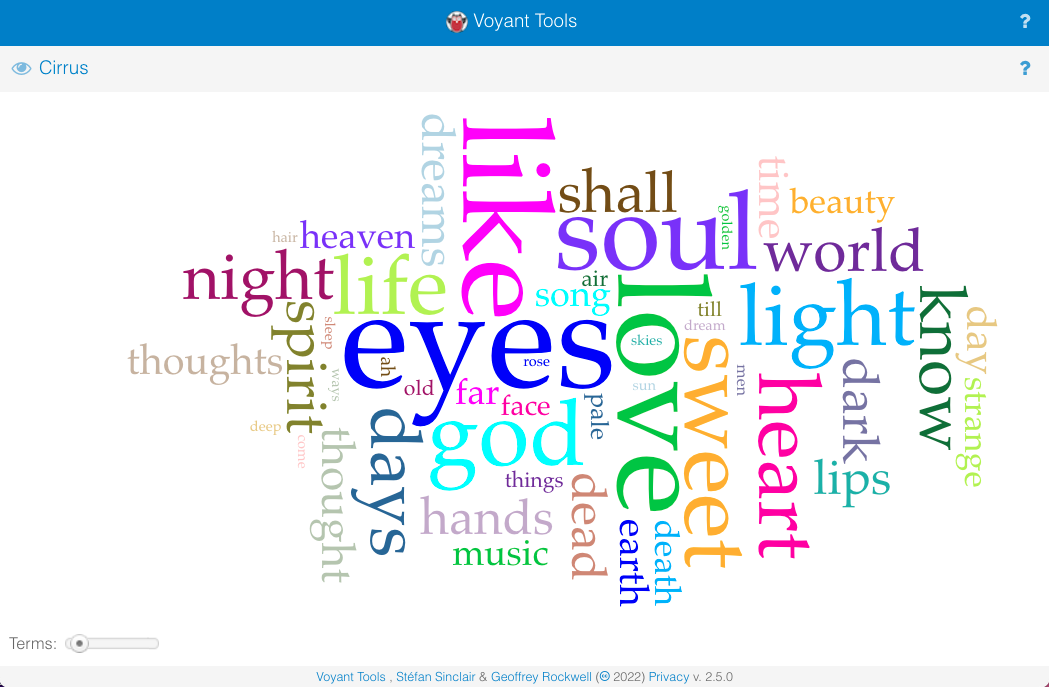Word Clouds
One of the simplest forms of text analysis is to look at word frequency, namely how often a poet uses particular words (compared with another poet for example). One way to display the results is in a ‘word cloud’ where words are plotted in a cloud-like jumble, and where the size of the words in the cloud is determined by how often they are used in the text. By looking at a word cloud, you can get a quick impression of the content of the text you are exploring.
In this exercise, we will look at word clouds for some of the poets using the 'Cirrus' application, part of the Voyant Tools but you can find a large number of other word cloud generators online (just search for ‘word cloud’).
To start, go to the '2. Looking at clouds' tab and then continue to '3. More clouds'. To do another exercise, try the 'Next' button below.
Rosenberg
Find the Cirrus tool at https://voyant-tools.org/?view=Cirrus Add the Rosenberg text (copy-and-paste the text or simply add the URL of the Rosenberg text page). Click ‘Reveal’ to see the cloud.
For Rosenberg it will look something like this:

The larger the word, the more often Rosenberg uses it in his poetry (the program has automatically excluded common function words like it, the, he). You can quickly see that eyes, like, and love are very frequent, and thus displayed in large font, while night, days, heaven and death are frequent enough to be included in the cloud, but not as frequent as some other words.
You can change the size of the cloud (number of words included) using the ‘Terms’ slider (bottom left). You can find other settings and the download option in the top right corner (hover your mouse pointer over it if the icons are not displayed by default. That will also allow you to see a brief explanation of what each icon does).
Owen
Now repeat the analysis on the poetry of Wilfred Owen. You can find a link to the texts at the bottom of this page. Copy-and-paste the text or the URL of the page.
Example: Comparing Owen to Rosenberg what are the similarities? Hint: look for words to do with the body (hands, heart, eyes). Why might this be so? Look for archaic words such as thy, thou, or thee. Again why would a twentieth-century poet use these?
Other poets
Repeat this exercise with the other poets. You can find the texts by following the links at the bottom of this page. Copy-and-paste the text or the URL of the specific text.
Example: Try creating a word cloud of the poet Edward Thomas. Thomas is generally noted, out of the poets used here, as more ‘pastoral’, i.e. focused on nature and man’s impact on his surroundings. Do we see the same focus on the human body we see in Rosenberg and Owen or are different words appearing now?
You can also include several texts at once. The cloud will then show the words that are most common in the whole body of material, not in the individual texts.
Previous: Start page Next: Concordancing - exploring words in context
